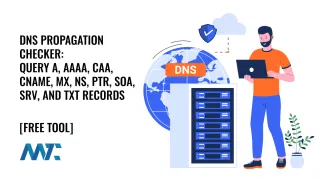XMPP
XMPP is the Acronym for Extensible Messaging and Presence Protocol

An open communication standard that enables different systems, applications, or devices to exchange messages in real-time. While initially developed for instant messaging, XMPP has evolved to support a wide range of applications, particularly for organizations seeking to build or utilize secure, private messaging and collaboration tools.
For business leaders, particularly those in marketing and sales, understanding XMPP is beneficial when evaluating communication platforms or planning digital product features that incorporate messaging, notifications, or user presence indicators, such as online or away status.
Why Should Marketing and Sales Teams Care About XMPP?
Most people don’t need to know the nuts and bolts of how a messaging system works, but if you’re in a decision-making role, here are a few reasons XMPP might come up in strategic discussions:
- Enabling Custom Branded Messaging Apps: If your company is considering launching its own communication platform—say, for customer support, community engagement, or internal use—XMPP provides a flexible backbone. It’s widely used in secure apps, open-source chat platforms, and even some enterprise social tools. Because it’s extensible, developers can tailor it to match your brand experience without starting from scratch.
- Privacy and Control: XMPP is decentralized, meaning you can run your own XMPP server rather than relying entirely on third-party platforms. This is especially appealing to businesses concerned about data privacy, regulatory compliance (like GDPR), or owning their user data and interactions.
- Interoperability and Standards-Based Messaging: Unlike proprietary systems, such as Slack or WhatsApp, XMPP is open and based on global standards. This means it can integrate with other services more easily, allowing marketing and sales tools to exchange data, such as triggering alerts, updates, or lead notifications in real-time across platforms.
Real-World Use Cases of XMPP
- Customer Engagement Apps: A brand that wants to provide real-time messaging inside a mobile app—such as customer support or community chat—might use XMPP behind the scenes to handle those messages reliably and securely.
- Sales Notifications: A CRM can use XMPP to instantly alert sales representatives when a lead opens a proposal or responds to a message, eliminating the need for slower email notifications.
- Internal Messaging or Field Communication: For organizations with mobile field teams or distributed sales personnel, XMPP can serve as the foundation for secure, company-owned communication apps.
How It Compares to Other Messaging Options
You may have heard of APIs like Firebase or platforms like Twilio and Slack. XMPP differs in that it provides businesses with more flexibility and control over the infrastructure. It also enables presence awareness—the ability to show when users are online, typing, idle, etc., which can be a key feature in customer service or sales chat interfaces.
Key Takeaways
XMPP is like the plumbing behind the scenes of modern messaging. You don’t have to use it directly, but if your company is building a communication tool or wants more control over messaging data, it’s a protocol worth discussing with your product or engineering team. For marketers and sales leaders, it represents the opportunity to craft tailored, secure, real-time user experiences without being locked into third-party tools.
In a world where customer experience and real-time engagement are increasingly critical, understanding what powers those experiences—like XMPP—can help you make smarter tech investments and strategic decisions.

